
The Todgha Gorge: Morocco’s Grand Canyon of the Atlas
Carved by centuries of flowing water through ancient limestone, the Todgha Gorge stands as one of Morocco’s most awe-inspiring natural wonders. Towering up to 300 meters high, the gorge’s dramatic cliffs rise on either side of a narrow canyon floor, where a gentle river winds through lush oases and rugged rock formations. Nicknamed “Morocco’s Grand Canyon,” this majestic site attracts nature lovers, climbers, photographers, and cultural explorers alike.
Located near the town of Tinghir in the eastern High Atlas Mountains, Todgha Gorge is more than just a geological marvel it’s a gateway to traditional Berber life, epic mountain landscapes, and the raw beauty of southern Morocco. Whether you’re on a desert road trip, seeking a peaceful escape, or chasing your next climbing challenge, Todgha offers a rare mix of adventure, serenity, and culture all in one unforgettable location.
In this guide, you’ll find everything you need to plan your visit from how to get there and what to do, to local tips and nearby gems that will turn a simple stop into a highlight of your Moroccan journey.
Where Is Todgha Gorge?
The Todgha Gorge is in the eastern part of Morocco’s High Atlas Mountains, just outside the town of Tinghir (also spelled Tinerhir). It sits on the edge of the Sahara, making it a popular stop for travelers journeying between the desert dunes of Merzouga and the central Moroccan cities.
Geographic Setting
- The gorge cuts through the limestone cliffs of the eastern Atlas range, creating a narrow canyon with vertical walls rising up to 300 meters.
- At the base of the gorge, the Todgha River flows gently, feeding a series of palm groves and lush farmland known as the Palmeraie of Tinghir.
How to Get There
From Marrakech (approx. 6–7 hours, 370 km):
- Travel via Ouarzazate on the N10 road. Many visitors include Todgha in a multi-day desert itinerary to Merzouga or Erg Chebbi.
From Ouarzazate (approx. 3–4 hours, 170 km):
- Take the scenic drive east along the Road of 1000 Kasbahs, passing through Skoura, El-Kelaa M’Gouna, and Boumalne Dades.
From Merzouga (approx. 3–4 hours, 200 km):
- Heading west, this is a common route for those leaving the desert toward central or northern Morocco.
Tip:
- The roads are mostly paved and well-maintained. However, winding mountain routes mean travel times may be longer than distances suggest.
Transportation Options
- Private Car or Rental: The most flexible and scenic option—ideal for independent travelers or photographers.
- Guided Tours: Multi-day desert tours from Marrakech often include stops at Todgha Gorge.
- Public Transport: Buses and shared taxis (grand taxis) are available to Tinghir, followed by a local taxi to the gorge (~15 km away).
With its accessible location and proximity to key desert and mountain destinations, Todgha Gorge is a natural and cultural stop worth planning for.
What Makes Todgha Gorge Special?
The Todgha Gorge isn’t just another scenic stop it’s one of Morocco’s most impressive natural wonders. Here’s what makes it truly unforgettable:
Towering Cliffs
The limestone walls of the gorge rise up to 300 meters (980 feet) on either side, creating a dramatic canyon that narrows to just 10 meters (30 feet) in some places. Walking through this sheer-sided corridor, you feel dwarfed by the natural architecture surrounding you.
The Todgha River
Flowing gently through the base of the gorge, the Todgha River has carved out the canyon over thousands of years. It provides a lush green contrast to the surrounding red and ochre rocks and supports small gardens and palm groves nearby.
World-Class Rock Climbing
Todgha is one of Morocco’s premier rock-climbing destinations. It offers hundreds of bolted climbing routes of varying difficulty, attracting climbers from around the world. Even if you’re not a climber, watching others scale the cliffs is fascinating.
Photogenic Beauty
The gorge is incredibly photogenic, especially during early morning and late afternoon when the sunlight paints the rocks in golden and orange hues. It’s a dream for landscape photographers and Instagram travelers alike.
Berber Culture and Hospitality
The surrounding area is home to Amazigh (Berber) communities who live in villages nestled within the cliffs and palm groves. Many offers guided hikes, traditional meals, and even overnight stays in family-run lodges or kasbahs.
Cool Climate in a Warm Region
Despite its location near the edge of the Sahara, Todgha Gorge benefits from a refreshing microclimate thanks to the shade of the cliffs and the flowing water especially pleasant during Morocco’s hot summer months.
Whether you’re there to hike, climb, take photos, or simply marvel at nature’s power, Todgha Gorge is a destination that captivates all who visit.
Ready to Explore Morocco’s Grand Canyon?
Step into the heart of the High Atlas where sheer cliffs rise like stone cathedrals and rivers carve paths through ancient rock. Whether you crave adventure, serenity, or cultural connection, Todgha Gorge is where Morocco’s wild beauty comes alive. Hike, climb, wander, and wonder—this unforgettable destination is waiting for you.
Top Things to Do in Todgha Gorge
Todgha Gorge is not just about standing in awe of towering cliffs it’s an active traveler’s paradise. From thrilling adventures to peaceful moments in nature, here’s what you can do in and around the gorge:
Hike Through the Gorge and Beyond
- Start with the main paved path that winds through the narrowest section of the gorge. It’s easy, scenic, and perfect for all fitness levels.
- For more adventurous hikers, several off-the-beaten-track trails branch off into the cliffs and mountains, offering panoramic views of the gorge and Tinghir valley.
- Guided treks can take you through remote Amazigh villages, past terraced gardens, and natural springs.
Tip: Hire a local Berber guide to learn about the land, local legends, and plants used for food and medicine.
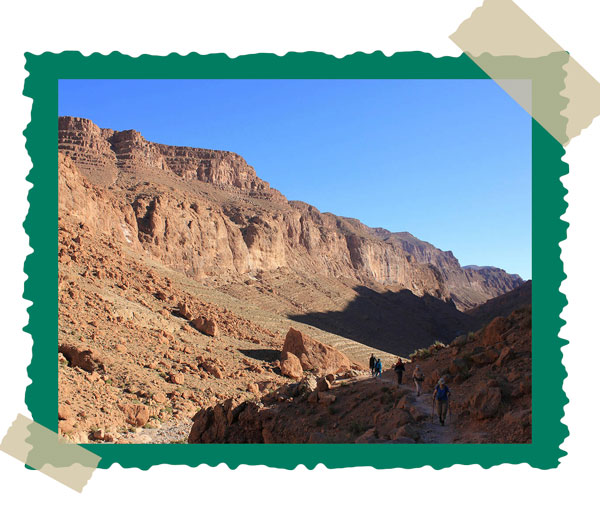
Try (or Watch) World-Class Rock Climbing
- With over 400 bolted climbing routes, Todgha is a global hotspot for climbers. Routes range from beginner-friendly to expert-level multi-pitch ascents.
- Climbing gear can be rented in Tinghir, and several guides or tour companies offer instruction for beginners.
- Even if you don’t climb, watching athletes cling to sheer walls above your head is an unforgettable part of the experience.
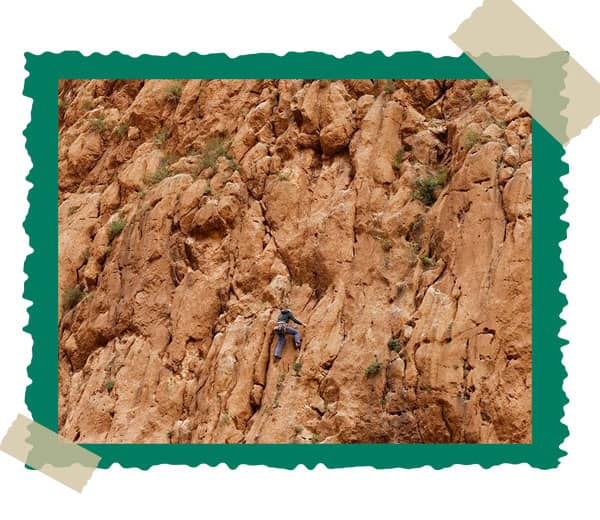
Spot Wildlife and Natural Beauty
- The gorge is home to a variety of birds, small mammals, and plant life especially visible in the cooler hours of morning and dusk.
- Keep an eye out for eagles, lizards sunning on rocks, and goats perched impossibly on cliff edges.
- In spring, wildflowers line the canyon floor, adding a splash of color to the red and orange tones of the rocks.
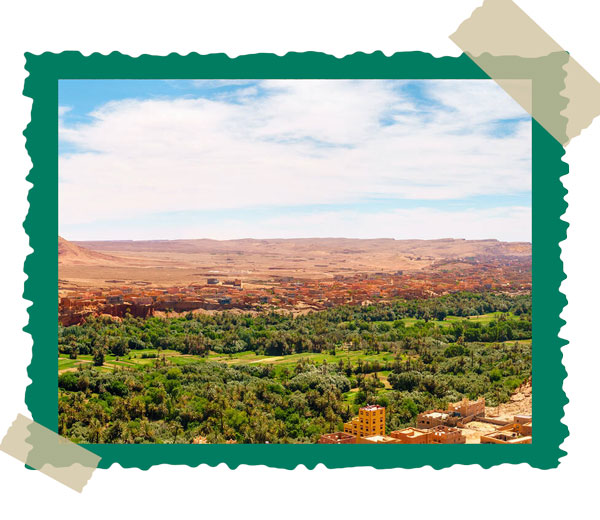
Capture Iconic Photographs
- The interplay of light and shadow in the narrow canyon creates jaw-dropping photo opportunities.
- Mornings offer soft, golden light while late afternoons cast dramatic shadows against the cliffs.
- The contrast of cool water, rugged rock, and bright sky makes for stunning compositions.
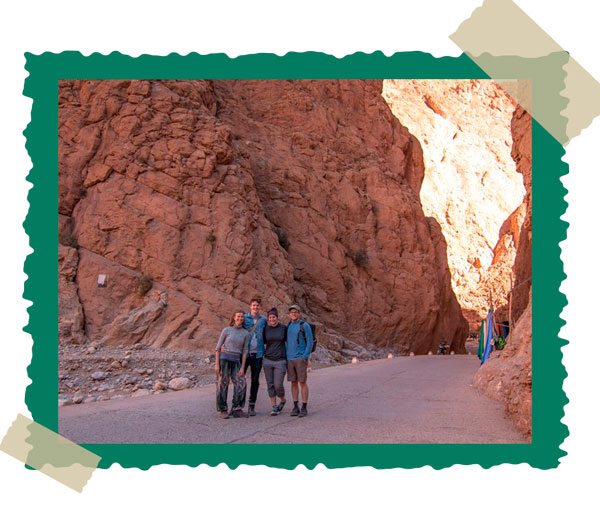
Explore by Donkey or Mule Ride
- For a more traditional mode of exploration, locals offer donkey or mule rides, especially useful for families or older visitors.
- These rides often follow longer scenic routes through Berber farms and into the nearby hills.
- It’s also a way to support the local economy in a respectful and culturally immersive way.
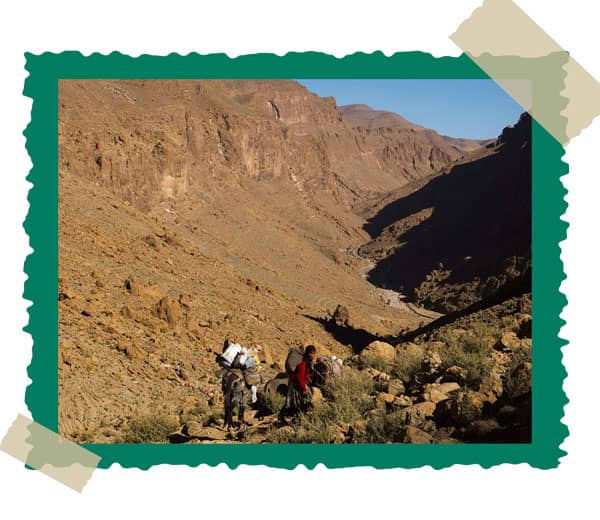
Visit a Traditional Berber Home or Village
- Some families in the area open their homes to visitors, offering meals, tea ceremonies, or even homestay experiences.
- Learn about traditional Amazigh cooking, see how clay houses are built, and discover the rhythms of rural mountain life.
- You can also shop for handwoven rugs, fossils, and crafts made by local artisans.
Whether you’re after adrenaline, culture, or relaxation, Todgha Gorge delivers an experience that goes far beyond the typical tourist trail.
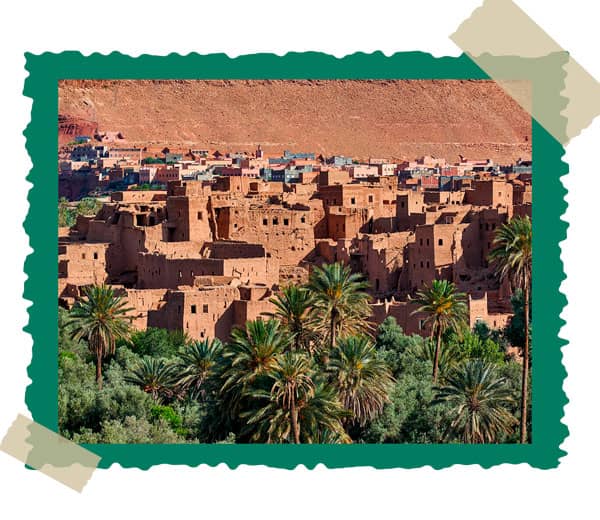
When to Visit Todgha Gorge
Timing your visit to Todgha Gorge can greatly affect your experience weather, crowds, and lighting all vary throughout the year and even during the day. Here’s how to choose the best time for your adventure:
Best Seasons to Visit
Spring (March to May)
- Ideal weather: Mild daytime temperatures (18–25°C / 64–77°F) and cool evenings.
- Lush scenery: Wildflowers bloom, and the river is full from winter melt.
- Great for hiking and photography: Clear skies and vibrant colors make it the most picturesque time of year.
Autumn (September to November)
- Another excellent season with similar temperatures and fewer crowds than spring.
- River flow is lower but still scenic.
- Perfect for rock climbing and long-distance trekking.
Summer (June to August)
- The gorge provides a refreshing microclimate, cooler than the desert regions, but temperatures can still hit 35°C (95°F) during the day.
- Best to visit early in the morning or late afternoon to avoid heat.
- Popular season for Moroccan families, so weekends can be crowded.
Winter (December to February)
- Daytime temperatures remain comfortable (10–18°C / 50–64°F), but nights can be very cold, especially in nearby villages.
- Fewer tourists = more peace and quiet.
- Snow may be visible on nearby mountain peaks, adding a dramatic backdrop.
Time of Day Tips
- Morning (8 AM – 11 AM): Best for hikers and photographers. Soft light and fewer crowds.
- Midday: Good for café stops and enjoying the shade within the canyon.
- Late Afternoon (4 PM – Sunset): Stunning light on the cliffs; ideal for golden-hour photography.
Avoiding Crowds
- Weekdays are far less crowded than weekends or national holidays.
- If visiting during peak seasons (especially spring), consider staying overnight nearby to explore before tour groups arrive.
Ready to Explore Morocco’s Grand Canyon?
Step into the heart of the High Atlas where sheer cliffs rise like stone cathedrals and rivers carve paths through ancient rock. Whether you crave adventure, serenity, or cultural connection, Todgha Gorge is where Morocco’s wild beauty comes alive. Hike, climb, wander, and wonder—this unforgettable destination is waiting for you.
What to Pack and Prepare for Todgha Gorge
Whether you’re visiting for a few hours or planning a full day of hiking and exploring, packing the right gear is essential for comfort, safety, and enjoyment in Todgha Gorge.
Footwear and Clothing
- Sturdy hiking shoes or boots with good grip are essential for rocky paths and steep climbs.
- Lightweight, breathable clothing is best during warmer months.
- In cooler seasons or early mornings, bring a light jacket or fleece temperatures can drop significantly, especially in the shade.
- Modest dress is respectful and recommended, particularly if you’re visiting villages nearby.
Sun and Heat Protection
- Sunscreen (SPF 30+) – the sun can be intense even inside the canyon.
- A wide-brimmed hat and sunglasses will help shield you from glare.
- Lip balm with SPF is often overlooked but very useful in dry air.
Water and Snacks
- Bring at least 1–2 liters of water per person, especially in warmer months.
- Reusable water bottles or hydration packs are eco-friendly and practical.
- Carry light snacks like nuts, fruit, or energy bars for longer hikes.
Tech and Essentials
- Camera or smartphone – the gorge is a dream for photography.
- Power bank if you plan to stay out all day and use your phone frequently.
- Binoculars (optional) for spotting climbers, birds, or distant villages.
Proper preparation ensures you enjoy Todgha Gorge safely and comfortably, whether you’re here for a casual stroll or a rugged mountain adventure.
Where to Stay Near Todgha Gorge
Spending the night near Todgha Gorge is a fantastic way to enjoy the landscape without rushing, especially if you want to catch sunrise or sunset in the canyon. The area offers a range of accommodations from traditional Berber guesthouses to charming eco-lodges all surrounded by nature and mountain views.
Staying in the Gorge Itself
Several small guesthouses and lodges are located directly along the road through the gorge or nestled into its cliffs.
- Kasbah-style stays: Traditional mud-brick buildings with panoramic terraces and simple yet comfortable rooms.
- Pros: Immediate access to hiking trails, stunning canyon views from your room, peace and quiet in the evenings.
- Example: Auberge Le Festival a guesthouse partly built into the cliff, offering a truly unique stay.
Tinghir (Tinerhir) – The Nearest Town
Located just 15 km from the gorge, Tinghir offers more accommodation options with easier access to restaurants, shops, and transport.
- Budget riads and hotels: Ideal for travelers looking for affordable, clean lodging.
- Mid-range kasbahs: Often include meals, Wi-Fi, and beautiful views of the palm grove.
- Example: Hotel Tomboctou a former Spanish-style mansion turned cozy riad with pool.
Eco-Lodges and Rural Retreats
Some guesthouses on the outskirts of the gorge or in nearby Amazigh villages focus on sustainability and immersive local experiences.
- Organic meals, solar-powered utilities, and cultural workshops (e.g., cooking or weaving) are common.
- These lodges often offer guided walks, stargazing, and Berber music nights.
Booking Tips
- Book ahead during peak seasons (spring and autumn), especially if you want a room inside the gorge.
- Ask if meals are included many rural stays offer delicious home-cooked dinners.
- Reviews often highlight hospitality and local knowledge more than luxury, so focus on atmosphere over amenities.
Spending the night near Todgha Gorge adds depth to your trip and lets you experience this spectacular place at its most peaceful before or after the day-trippers have left.
Nearby Attractions and Day Trip Ideas
While Todgha Gorge is a highlight, the surrounding region offers a wealth of other natural and cultural sites worth exploring. Whether you have a few extra hours or a few days, these nearby attractions can easily be added to your itinerary for a richer Moroccan experience.
Dades Gorge
-
Located just a short drive from Todgha Gorge, Dades Gorge is known for its dramatic rock formations and deep, winding canyons.
-
The area’s unique “Monkey Fingers” cliffs are a favorite spot for photographers and nature lovers.
-
Scenic drives through the gorge offer breathtaking views, especially along the famous switchback roads.
-
Hiking trails are available for all levels, with routes that reveal stunning landscapes and quiet Berber villages.
-
Many travelers combine Dades and Todgha Gorges into a multi-day trip to experience the best of both.
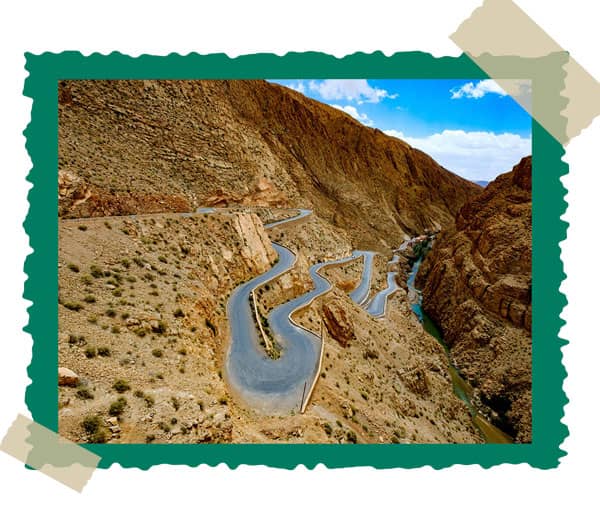
Tinghir Town
-
Tinghir is the closest town to Todgha Gorge, offering a glimpse into local life and Amazigh culture.
-
The town features lively markets, traditional architecture, and scenic palm groves.
-
Don’t miss the Kasbah of Glaoui, a historic site that reflects the region’s rich heritage.
-
Tinghir is known for its warm hospitality and makes a great spot to interact with locals.
-
It’s an ideal base for overnight stays and organizing guided excursions into the surrounding gorges.
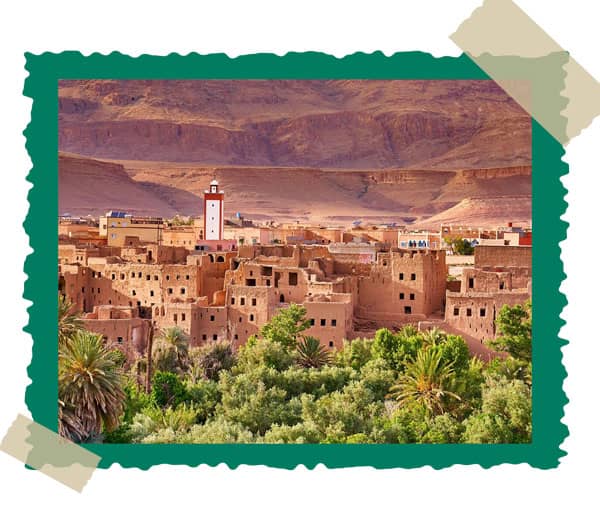
Palm Grove Walks (Palmeraie of Tinghir)
-
Explore the lush date palm oases of Tinghir, a peaceful contrast to the rocky gorges nearby.
-
Walk along traditional irrigation canals (khettaras) that nourish vegetable gardens and fruit trees.
-
Guided tours offer insight into local farming techniques and the rhythms of rural life.
-
It’s a serene, scenic experience perfect for nature lovers and cultural explorers alike.
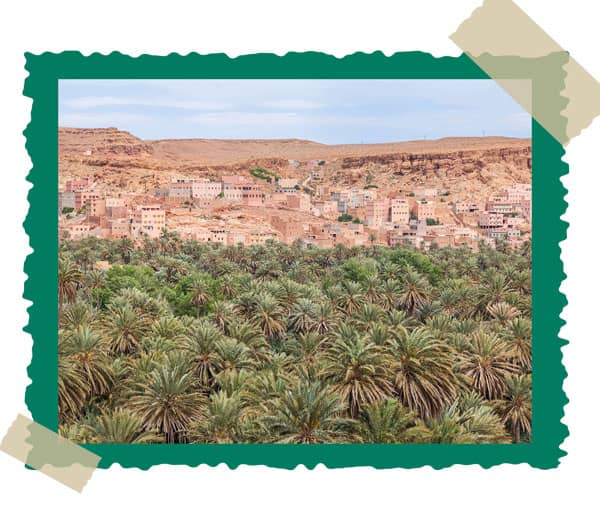
Ksar Aït Benhaddou
-
Aït Benhaddou is a stunning UNESCO World Heritage site known for its preserved earthen clay architecture.
-
Located west of Todgha Gorge, it’s a popular stop along the route to Ouarzazate and the High Atlas Mountains.
-
The ksar’s ancient walls, towers, and narrow alleys showcase traditional southern Moroccan design.
-
It has served as a filming location for iconic productions like Gladiator, Game of Thrones, and The Mummy.
-
Visitors can explore the site on foot, enjoy panoramic views, and learn about the region’s history and craftsmanship.
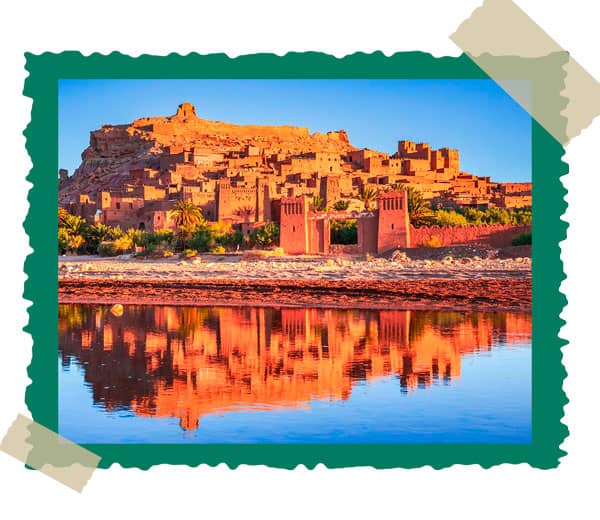
Merzouga and Erg Chebbi Dunes
-
Merzouga, located east of Todgha Gorge, is the gateway to the breathtaking Erg Chebbi sand dunes.
-
Many travelers pass through Todgha en route to experience the vast beauty of the Sahara Desert.
-
Enjoy unforgettable camel treks across the golden dunes, especially at sunrise or sunset.
-
Overnight stays in desert camps offer star-filled skies, traditional music, and warm hospitality.
-
It’s a once-in-a-lifetime adventure that contrasts beautifully with the rocky landscapes of the gorges.
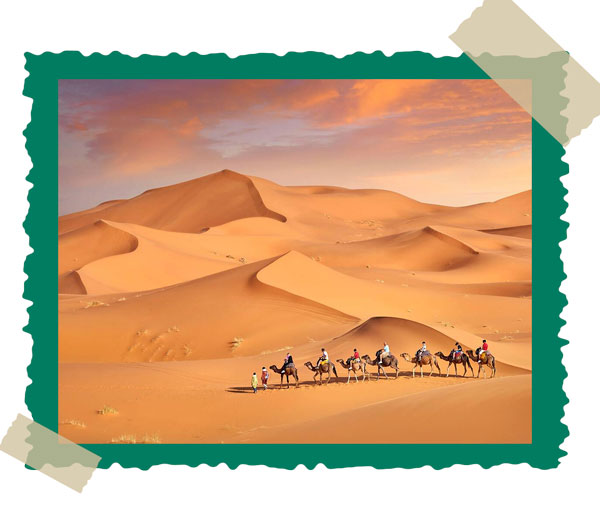
Valley of the Roses (El-Kelaa M’Gouna)
-
El-Kelaa M’Gouna, known as the Valley of the Roses, is famous for its fragrant rose fields and natural beauty.
-
The best time to visit is in spring (April–May) during the annual Rose Festival, a vibrant local celebration.
-
The festival features parades, music, traditional dance, and showcases local rose-based products.
-
Visitors can tour rose distilleries to see how rosewater and essential oils are made.
-
It’s a great spot to buy authentic, locally produced cosmetics and enjoy the floral charm of the region.
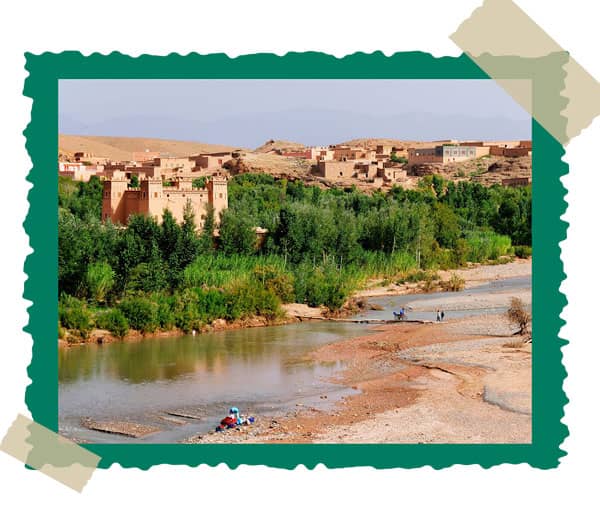
Oasis Villages and Berber Hamlets
- Discover smaller villages around Todgha offering cultural experiences like homestays, traditional meals, and artisan workshops.
- Engage with locals and learn about Amazigh customs and crafts.
Exploring these nearby sites enriches your visit, showcasing the diverse landscapes and vibrant cultures of southeastern Morocco.
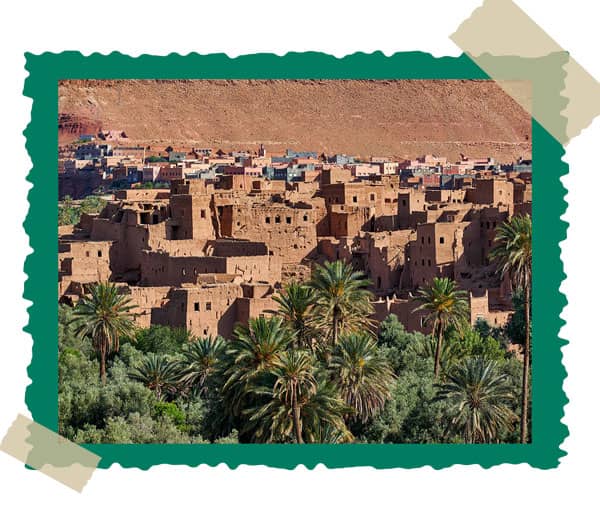
Cultural and Environmental Considerations
Visiting Todgha Gorge offers more than just stunning scenery it’s an opportunity to engage respectfully with the local Berber culture and help preserve the natural environment for future generations.
Respecting Local Berber Culture
- The gorge and surrounding villages are home to Amazigh (Berber) communities with rich traditions and lifestyles.
- Dress modestly, especially when visiting villages or interacting with locals. Women may prefer to wear long skirts or loose pants and cover shoulders.
- Always ask permission before photographing people or private homes.
- Support local artisans by purchasing handmade crafts, rugs, or jewelry directly from vendors.
- Learn a few basic phrases in Tamazight, Arabic, or French to connect better with residents.
Protecting the Environment
- Stick to marked paths to prevent soil erosion and damage to fragile plant life.
- Do not litter carry out all trash, including biodegradable waste.
- Avoid disturbing wildlife, including the many birds and small mammals native to the gorge.
- Use biodegradable sunscreens and insect repellents to minimize impact on water quality.
- Respect quiet hours, especially if staying overnight in rural guesthouses.
Sustainable Tourism Practices
- Choose locally owned accommodations and tours to ensure your spending benefits the community.
- Participate in or donate to conservation efforts when possible.
- Limit single-use plastics by bringing reusable water bottles and bags.
- Be mindful of water usage in this semi-arid region.
By embracing responsible tourism, you help preserve the beauty and culture of Todgha Gorge, ensuring it remains a treasured destination for years to come.
Conclusion
Todgha Gorge stands as one of Morocco’s most breathtaking natural wonders, offering visitors a unique blend of dramatic landscapes, thrilling outdoor activities, and rich cultural experiences. Whether you’re hiking through the towering limestone cliffs, watching climbers scale sheer rock faces, or enjoying mint tea by the river, this destination captivates all who venture here.
Its location near key sites like Dades Gorge, Tinghir, and the Sahara Desert makes Todgha an essential stop on any Moroccan itinerary. By visiting respectfully and embracing local culture, you help preserve this incredible place for future travelers.
Plan your trip wisely, pack appropriately, and prepare to be amazed by the grandeur and serenity of Morocco’s very own Grand Canyon.
